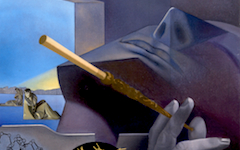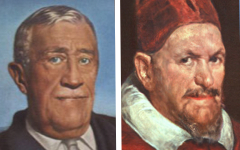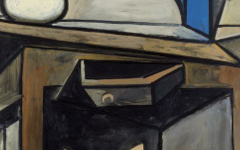Dali’s Paranoiac Village (c.1931)
Sometime in the early 1930's Pablo Picasso sent Salvador Dali a postcard of African villagers which, when turned on its side, resembles a face.
Click next thumbnail to continue
Dali, we are told, was so intrigued by the possibilities of a face hidden sideways that he turned this postcard into a painting.
Click next thumbnail to continue
A painting turned on its side to reveal a face is the same method Poussin used when composing his famous painting of The Ordination, recently explained here. In Poussin's case, there was clear meaning behind it. Here, any meaning is less obvious though both Poussin and Dali clearly want to discredit the truth of exterior reality.
See conclusion below
I do not believe that this method of constructing a painting was a new idea for Dali because his knowledge of past art would have been as encyclopedic as Picasso's. Besides, other paintings by him demonstrate that he was well aware of art's allegorical meaning. Unlike other artists, though, interested in a more subtle form of poetry, Dali soon went out of his way to dazzle spectators with the visual illusions of art. Here's how the Old Masters did it, he was essentially saying. Though he must have helped some viewers become more familiar with the poetic techniques of the masters, he made no such impression on academics who continue to mis-understand the reasons for Dali's pranks, unaware of their links to past art.
More Works by Dali
Notes:
Original Publication Date on EPPH: 16 Dec 2010. | Updated: 0. © Simon Abrahams. Articles on this site are the copyright of Simon Abrahams. To use copyrighted material in print or other media for purposes beyond 'fair use', you must obtain permission from the copyright owner. Websites may link to this page without permission (please do) but may not reproduce the material on their own site without crediting Simon Abrahams and EPPH.





